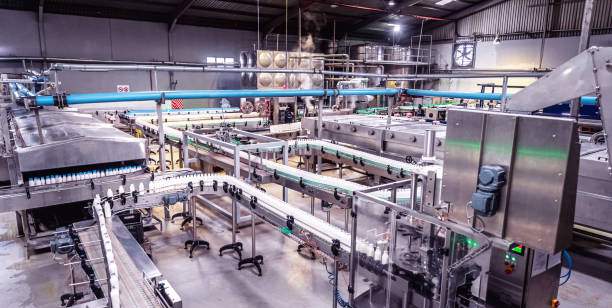Project Report For Food Processing Unit
Introduction
Project Report For Food Processing Unit Is As Follows.
Food processing is the process of converting food products into usable forms. It can include the transformation of raw resources into food via various physical and chemical processes. This process includes activities such as mincing, cooking, canning, liquefaction, pickling, macerating, and emulsification.
It needs clean, harvested crops or butchered and slaughtered animal products to generate appealing, marketable, and, in some cases, life-long food products. However, food processing can reduce the nutritional content of food and may include additives that are harmful to health.
When we think of breakfast cereal, we don’t usually imagine a pile of raw oats or a sheaf of wheat out in the field. This is because natural ingredients have been altered by food processing.
Food processing is the transformation of fresh, raw food into food products that are easily recognized, consumed on a daily basis, and enjoyed by all. Food processing isn’t always as difficult as it appears. It may be as simple as baking some cookies in your kitchen. It could be as simple as gathering fresh fruit, preparing it for drying, freeze-drying it, and then packaging it at a food processing factory.

Methods of Food Processing
Food preservation is a food processing technique used to prevent the growth of fungi, bacteria, and other microbes. It is the process of slowing down the oxidation of fats, which causes rancidity. There are various food preservation methods available that are specifically designed to preserve food.
Drying :- It is one of the classic methods used to degrade food products. One such natural way is to expose food particles to sunshine to dry them. This procedure would cause the moisture content of food to evaporate, preventing microbes from infecting the food. Hot air could also be used to eliminate moisture from meals.
Cooling :- It is a method of preserving food by inhibiting the growth of bacteria and the action of an enzyme that is responsible for food rotting. Some food goods, such as meat, dairy products, and fish, can be stored in a refrigerator to extend their shelf life.
Freezing :- It is a common procedure that has been used both domestically and commercially to preserve a wide variety of goods. Rapid freezing may have an unfavourable effect on food texture.
Heating :- The majority of germs and spores could be eliminated by applying adequate heat to food items. One well-known example is boiling milk.
Pickling :- It is the preservation of food in an edible and antibacterial liquid. Pickling can be divided into two types: fermentation and thermal pickling. Bacteria present in a liquid produce organic compounds that act as preservation agents in fermentation pickling. Chemical pickling preserves food in an edible liquid that kills germs and bacteria.
Market Potential Of Food Processing Unit
The Food Processing Market was valued at USD 143.51 billion in 2020 and is predicted to be valued at USD 235.67 billion by 2028, growing at a 6.6% CAGR between 2021 and 2028.
Food processing is the process of transforming raw food into finished products that may be consumed. This includes a variety of processing methods such as grinding grains to make raw flour and industrial processes to generate convenience foods such as pasta, noodles, and chips. India is a major producer and processor of rice, wheat, sugarcane, milk, as well as a wide range of fruits and vegetables and spices.
In addition, India is a major supplier of processed foods, primarily to the Middle East, Europe, and South East Asian countries. The expansion of this industry contributes significantly to agricultural trade in both domestic and international markets.
Rising demand for nutritional enrichment, combined with the EU’s support for regulating the use of food additives at the domestic level, is likely to boost the regional market growth. The presence of functional food manufacturers, as well as increased R&D expenditure in Europe to produce innovatively designed additives, are projected to stimulate product demand in the coming years.
Project Report Sample On Food Processing Unit
Need Help?
Create 100% Bankable Project Report
